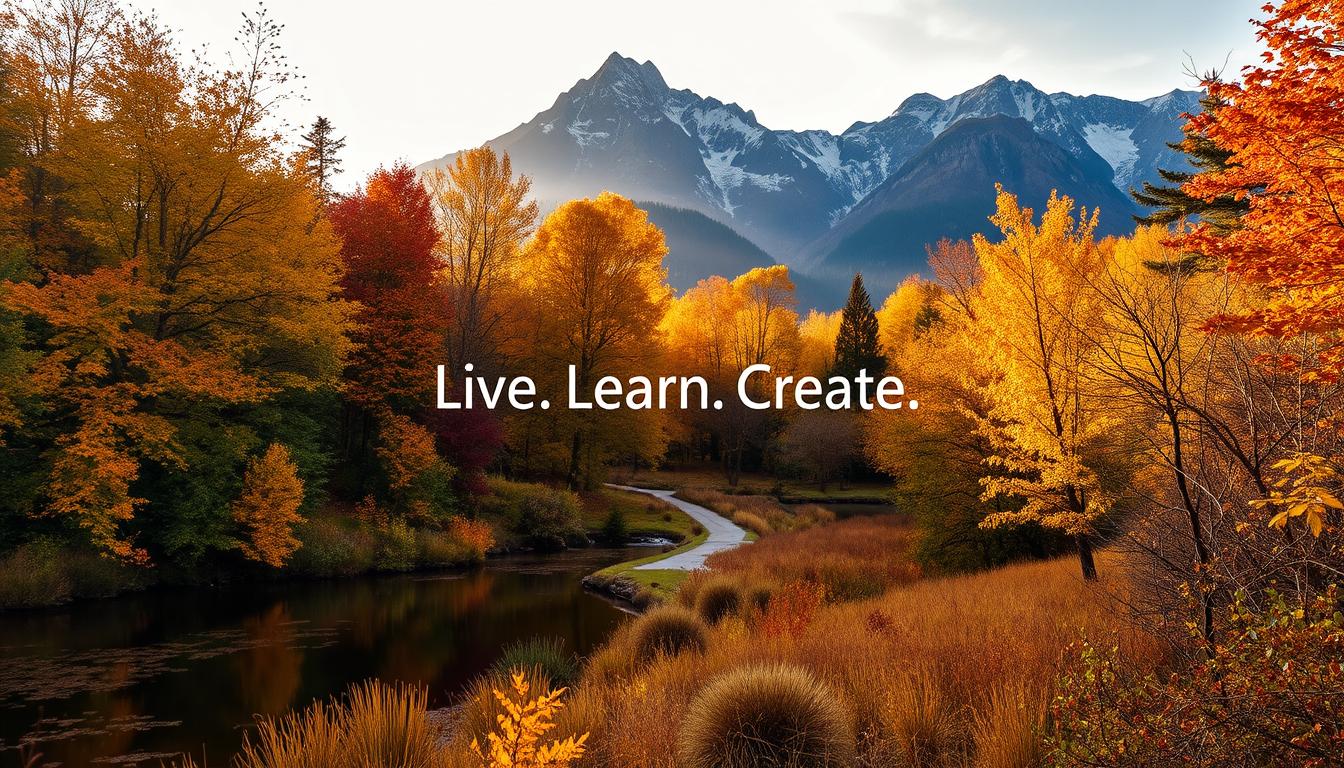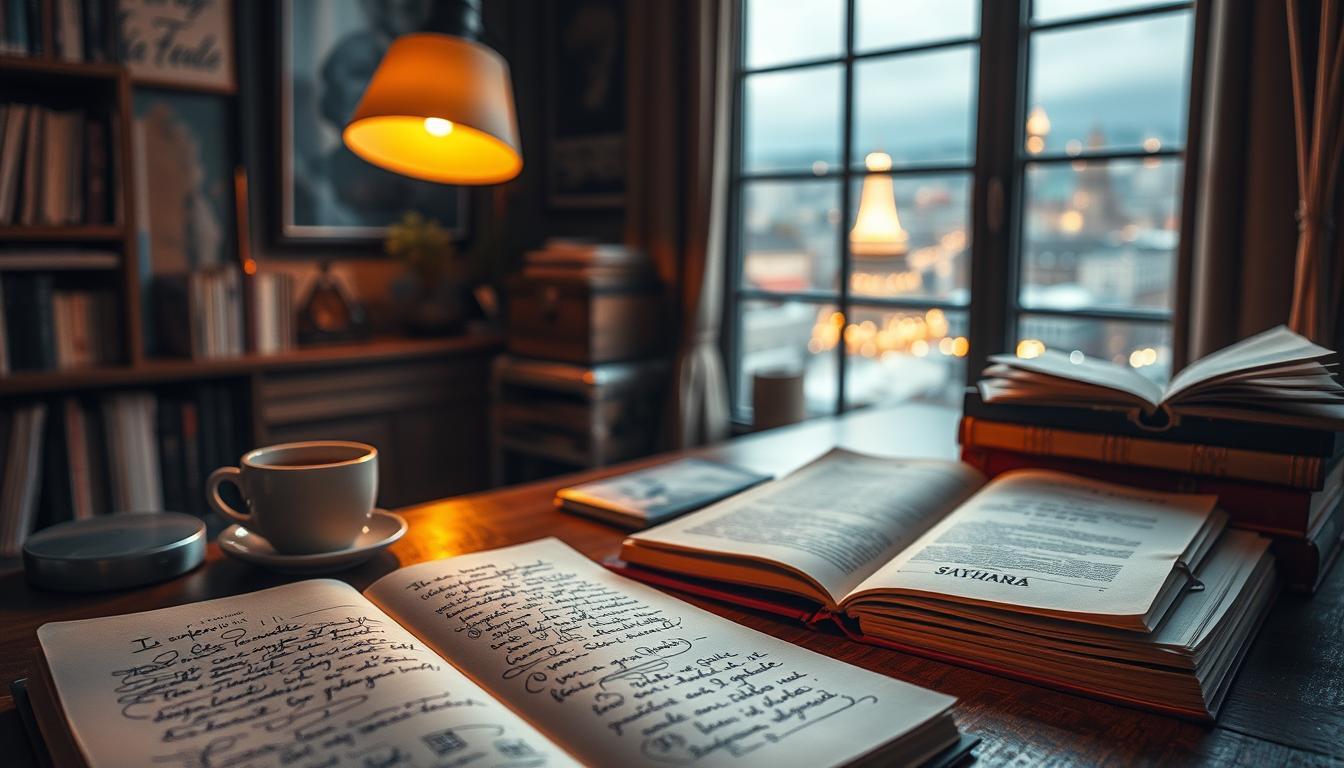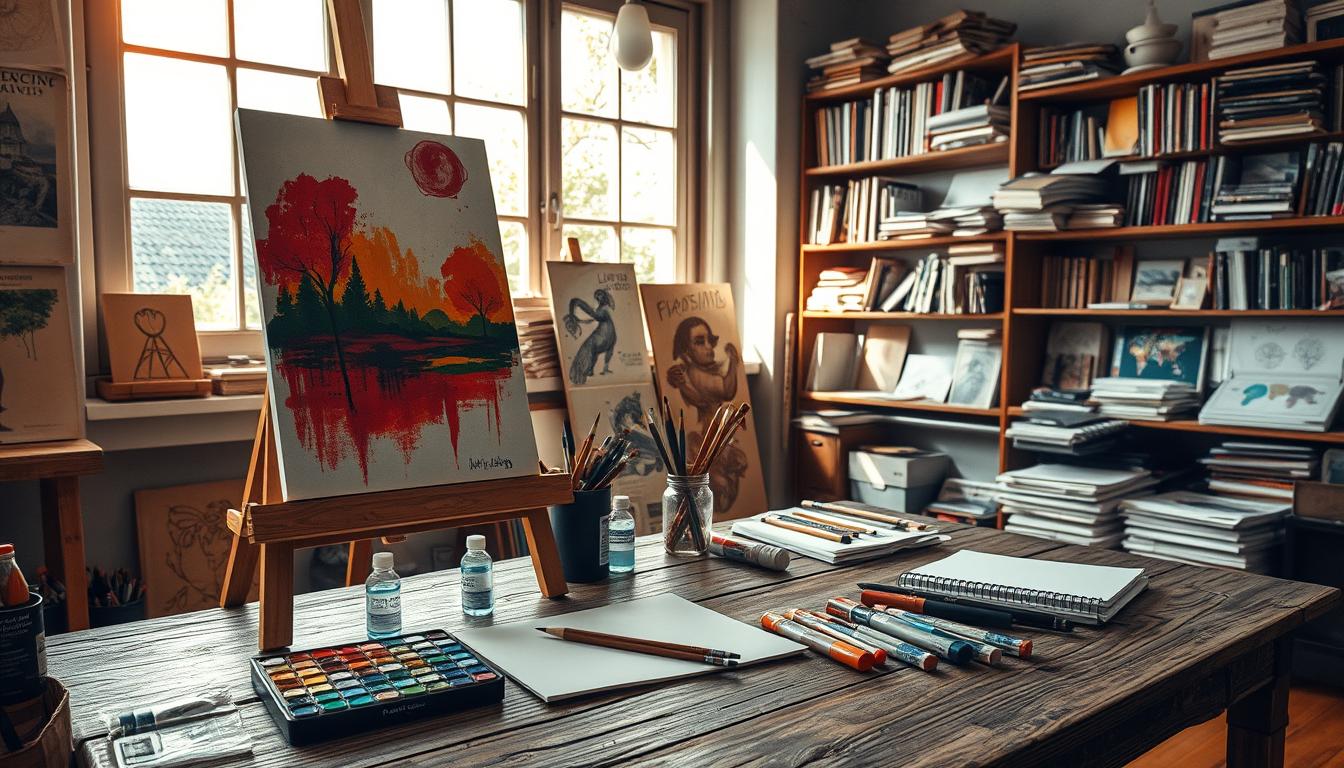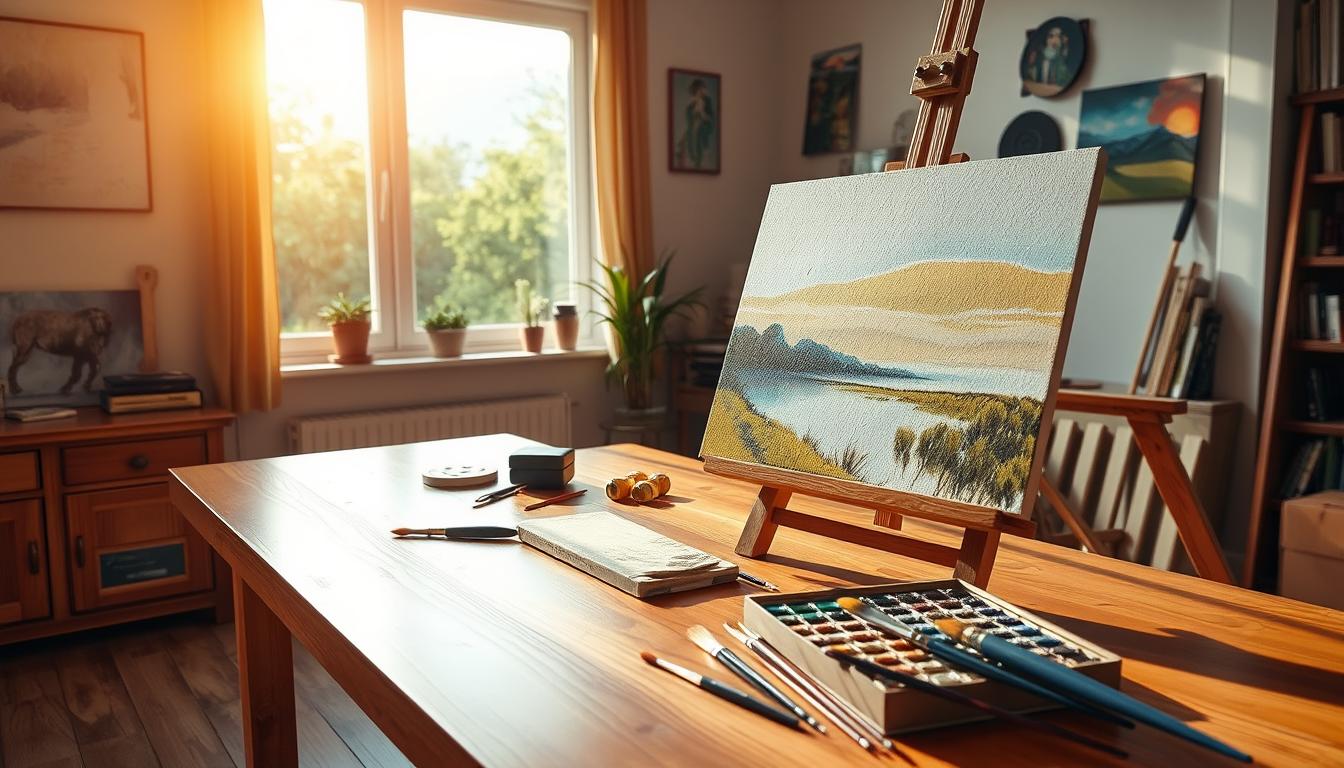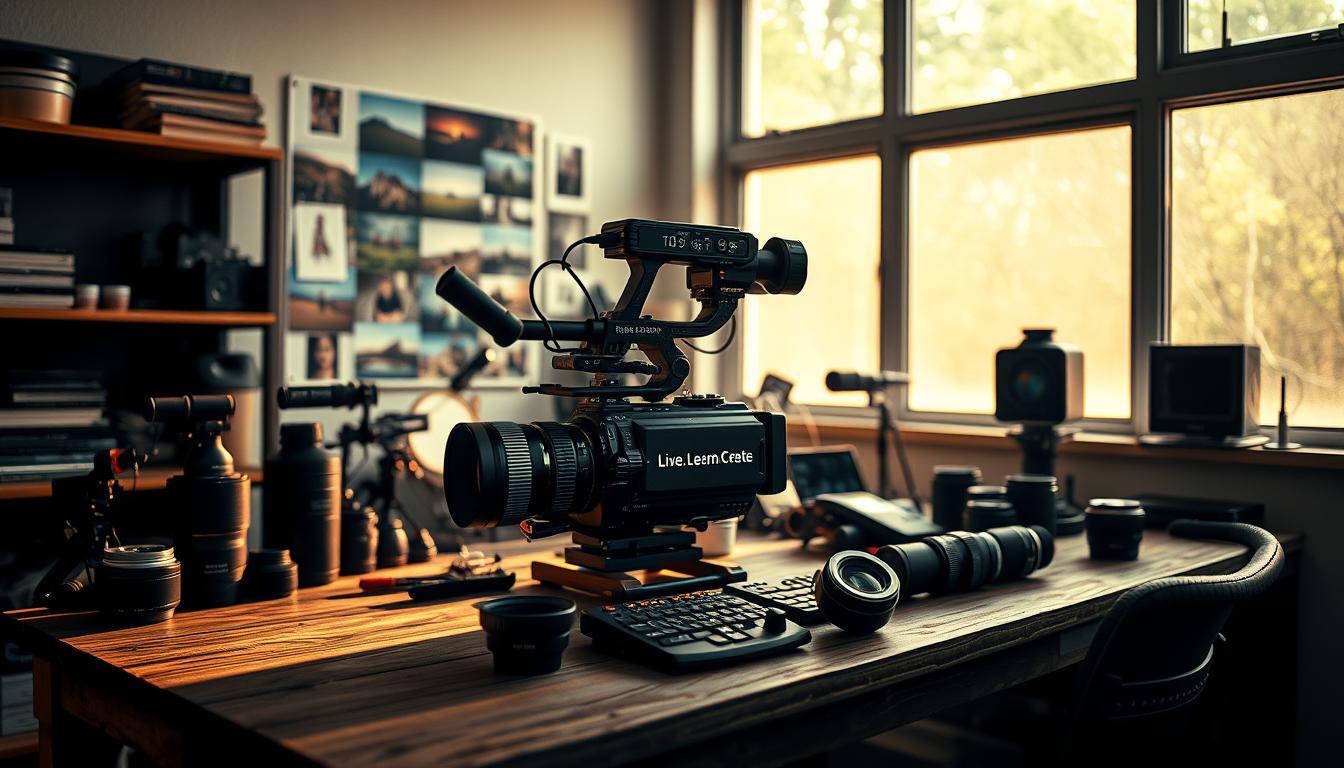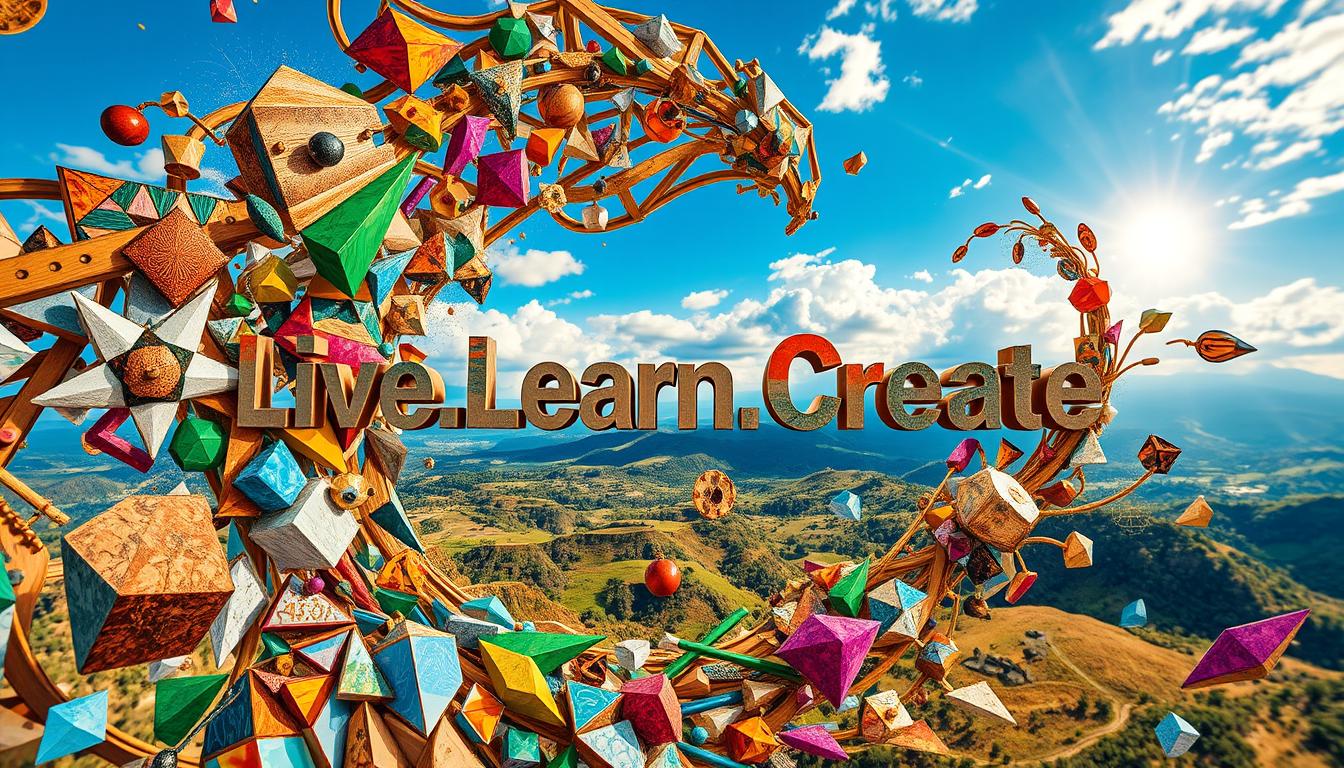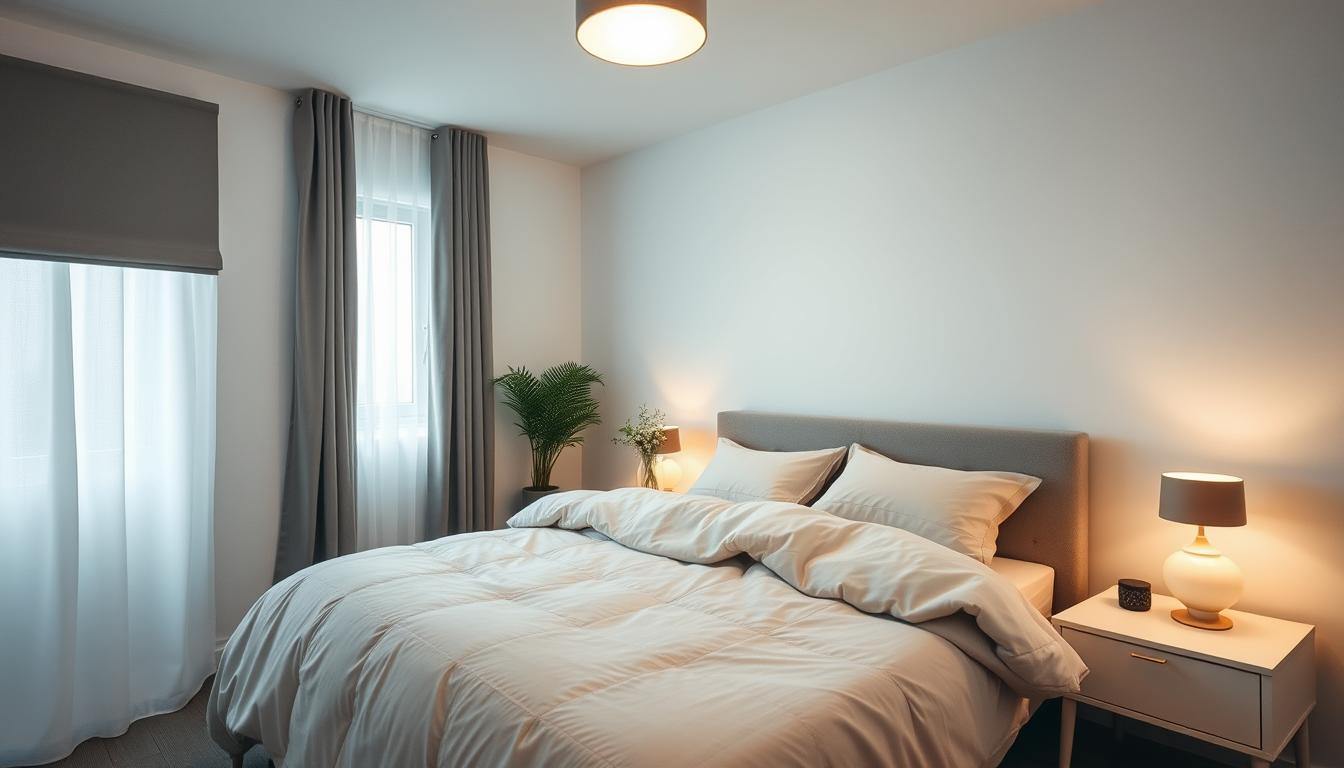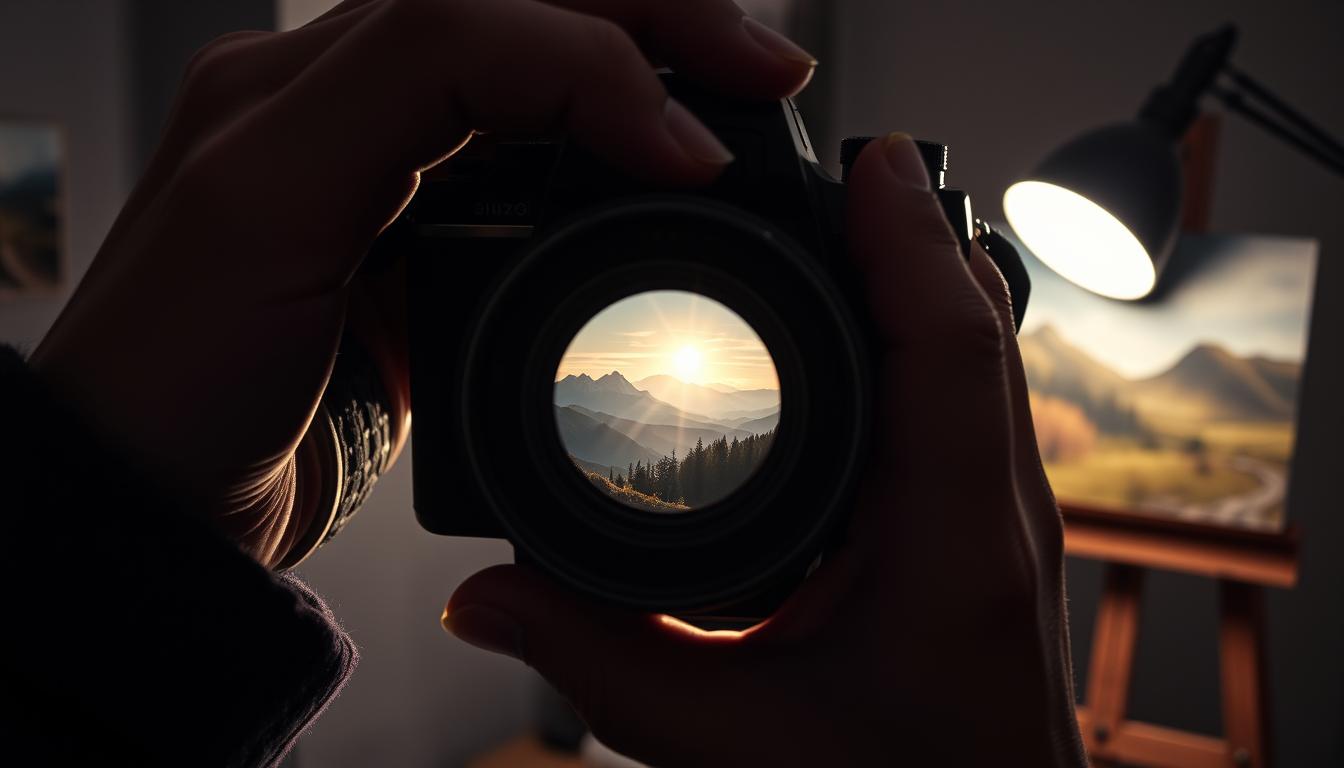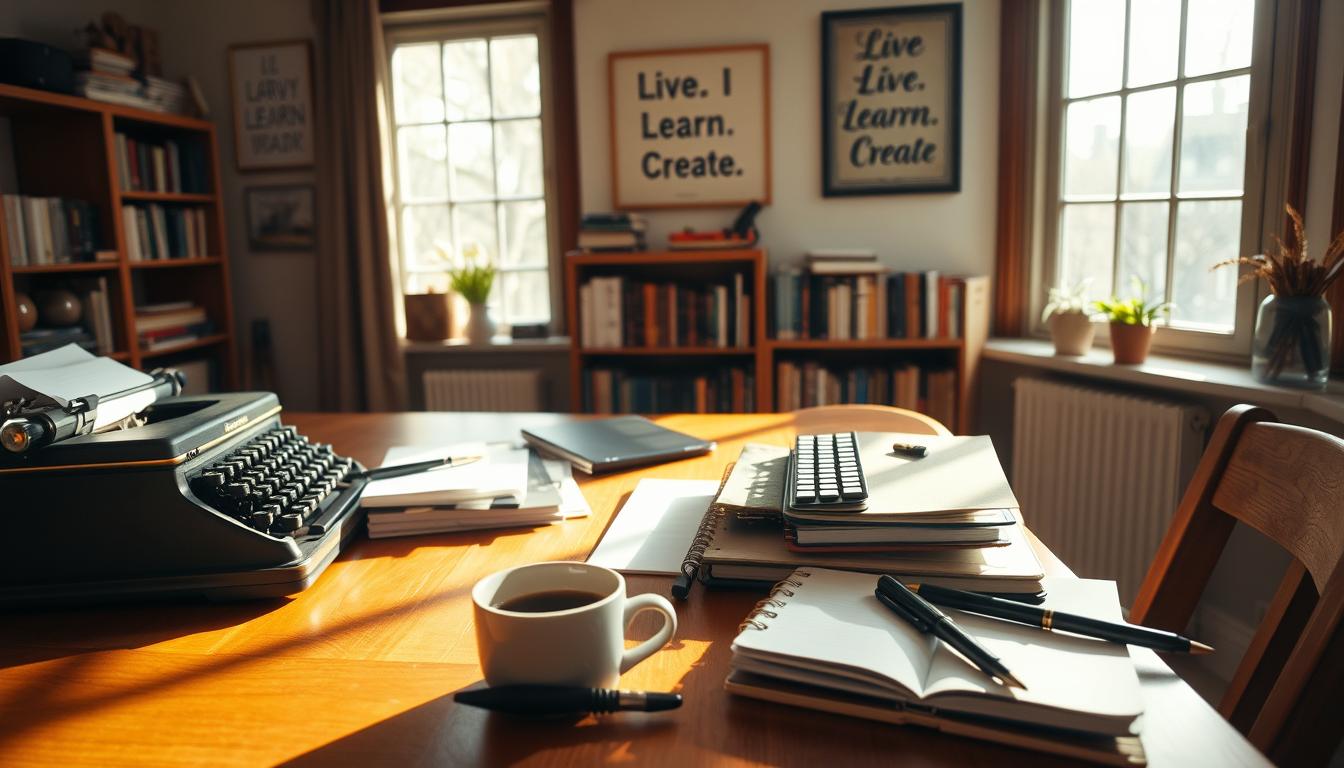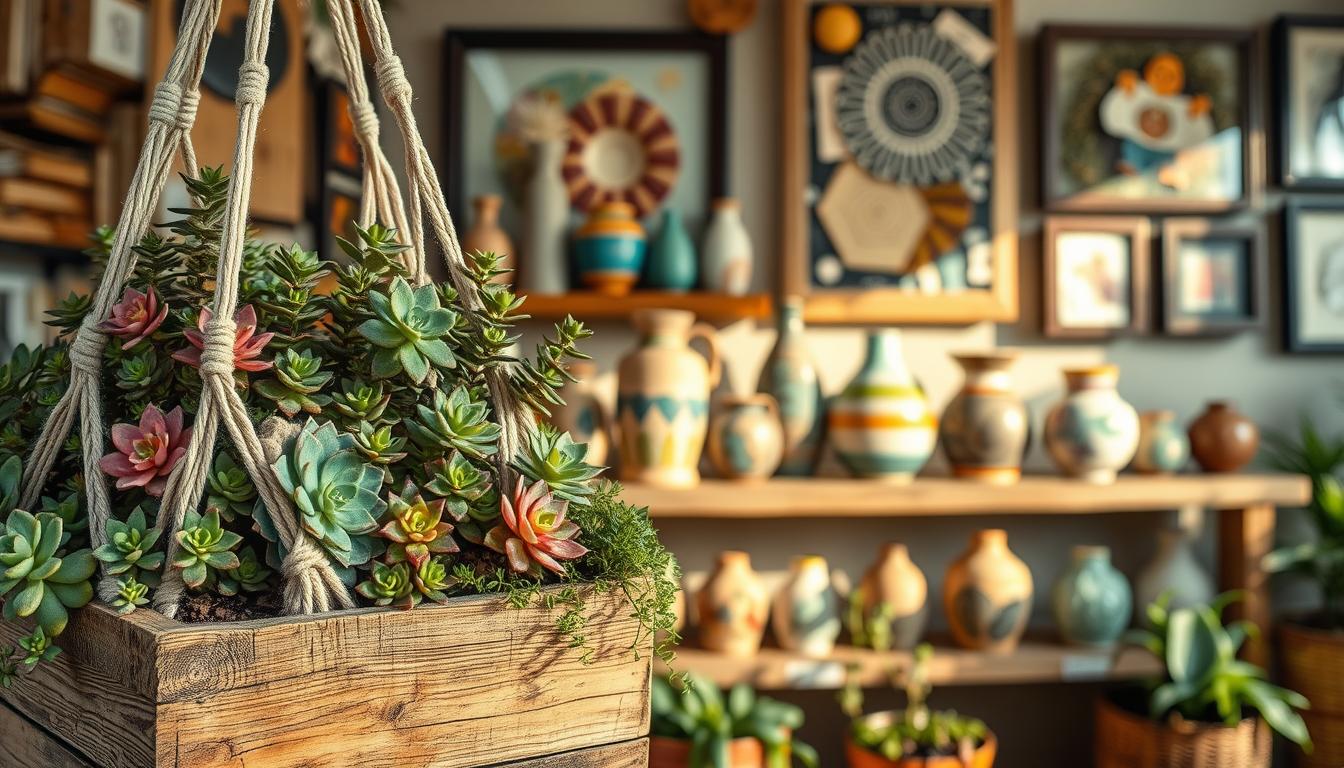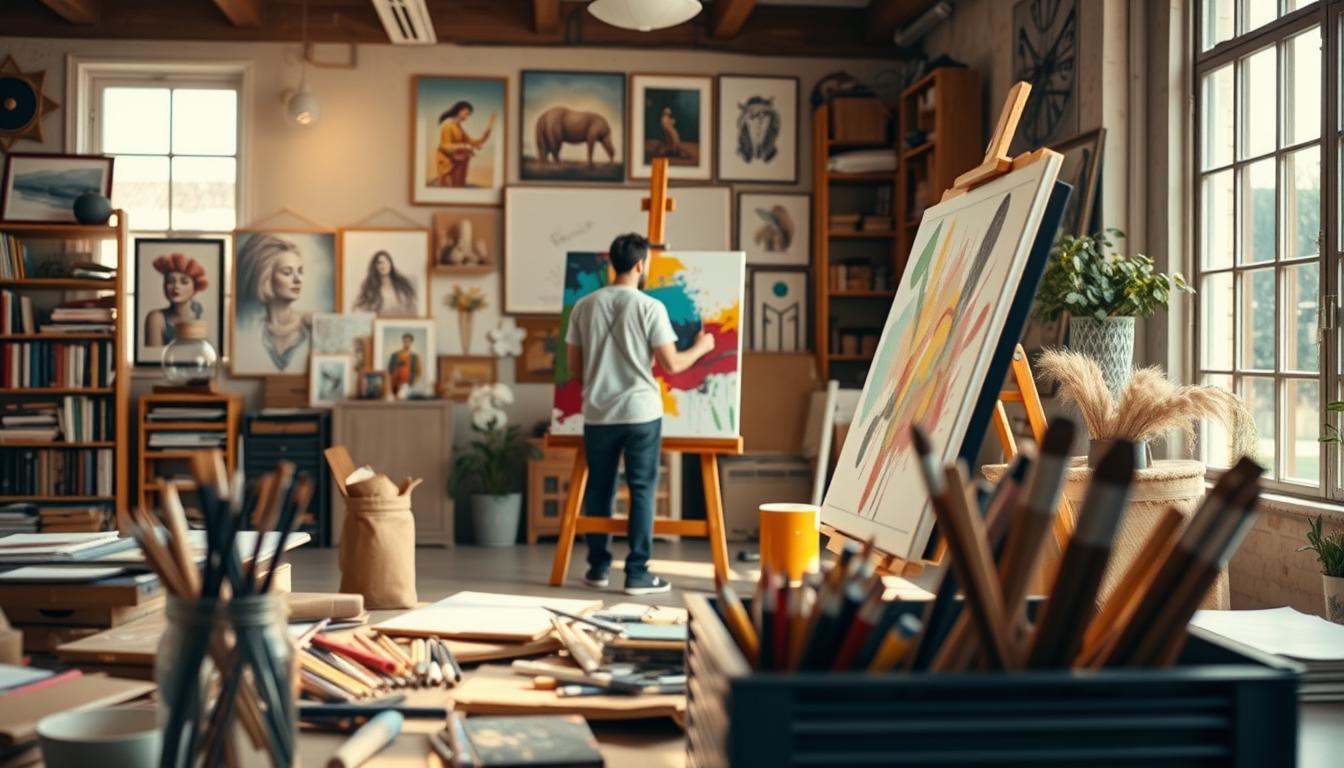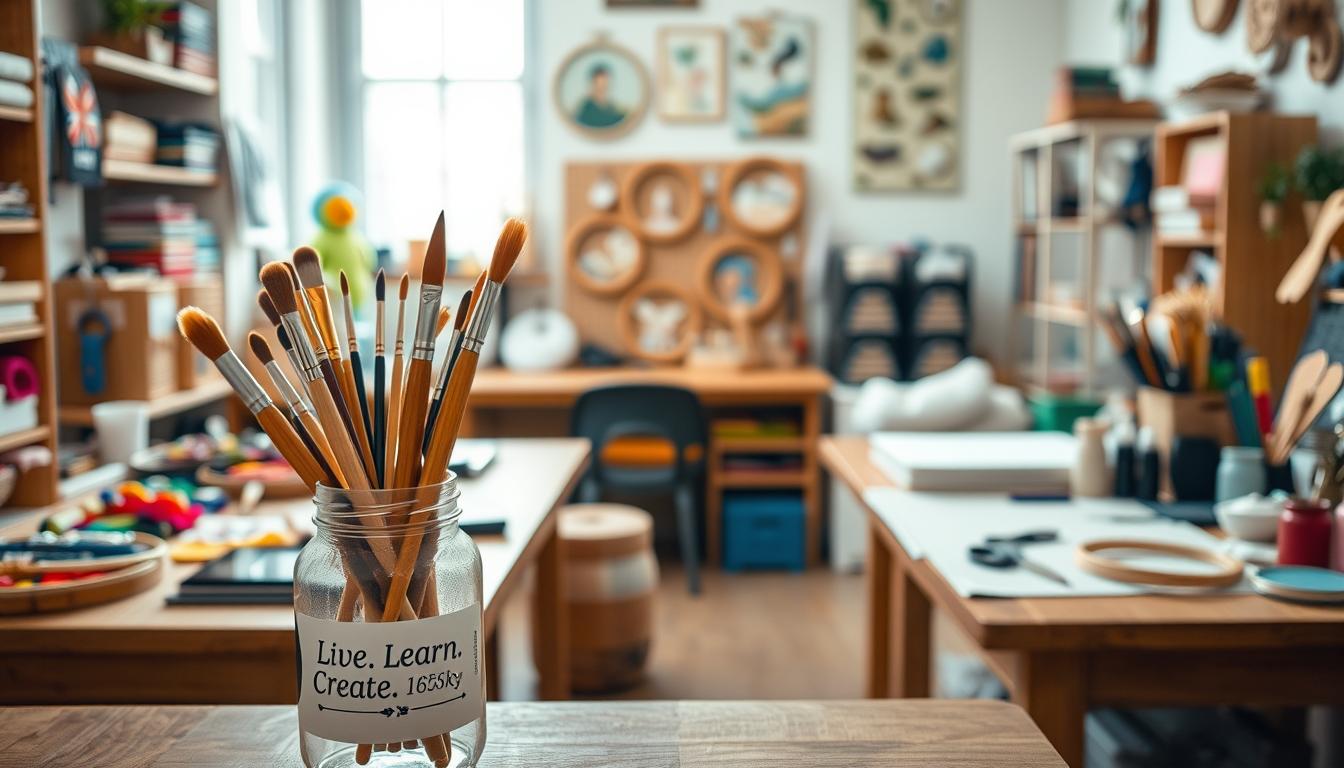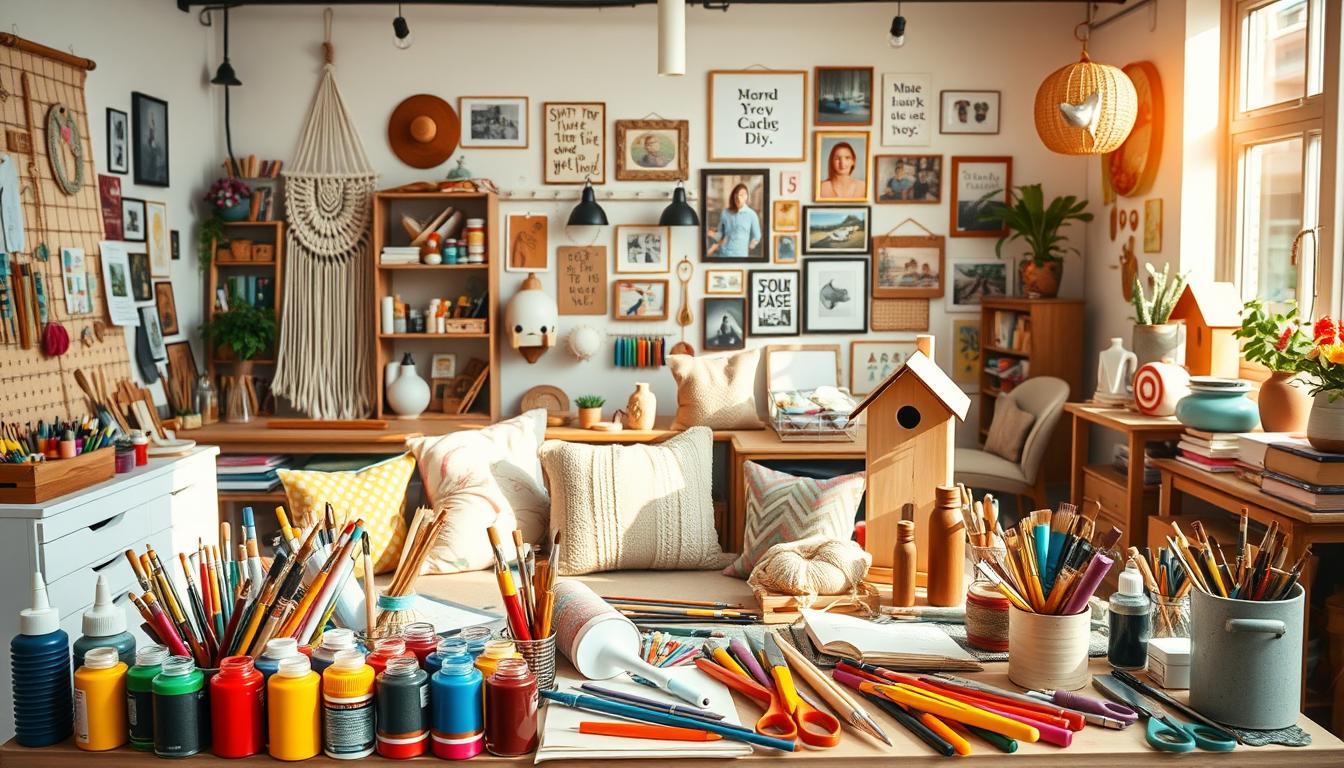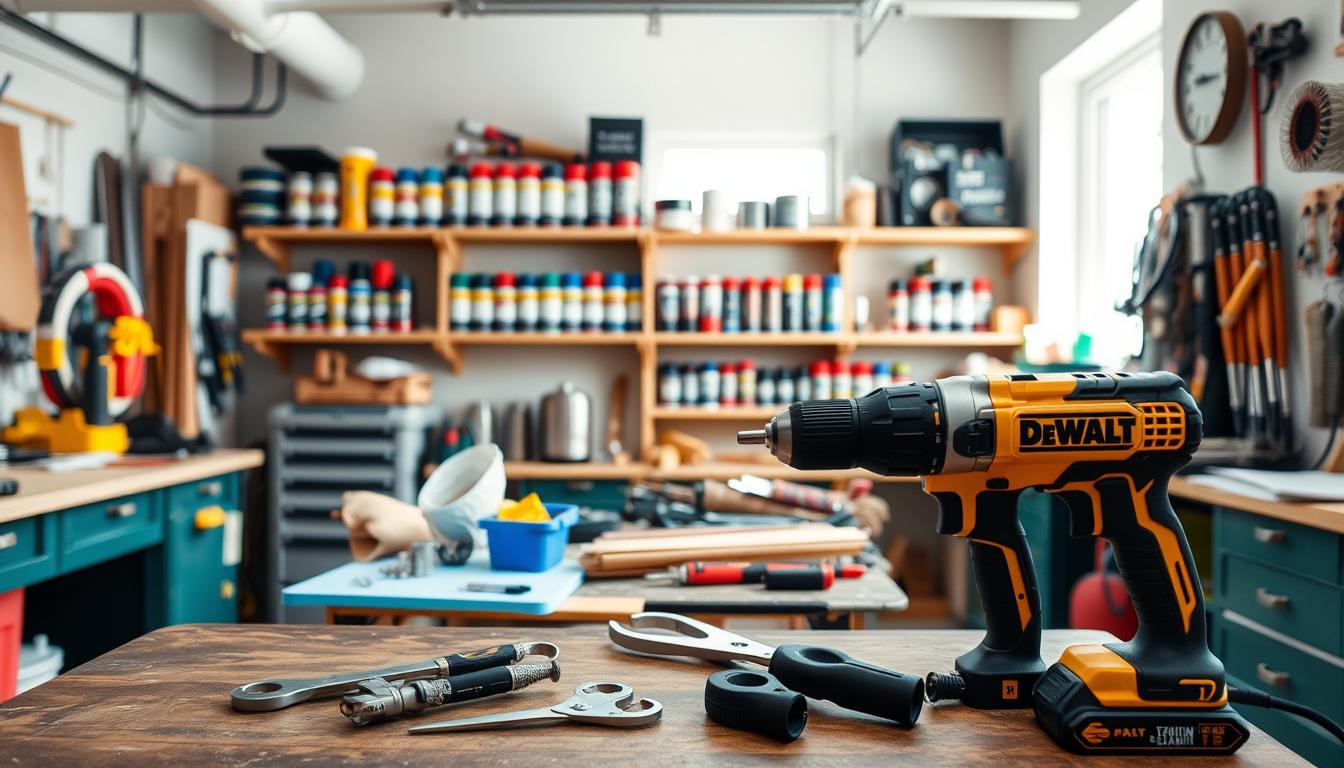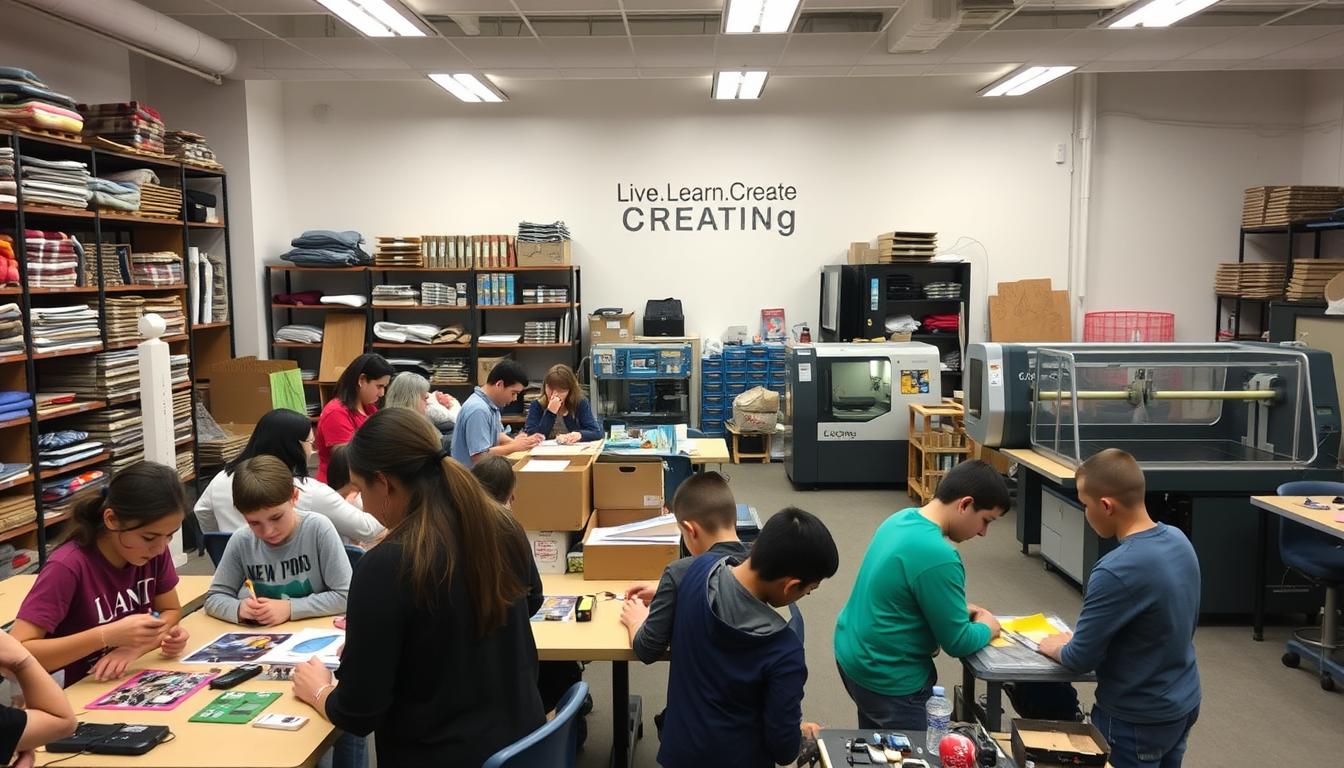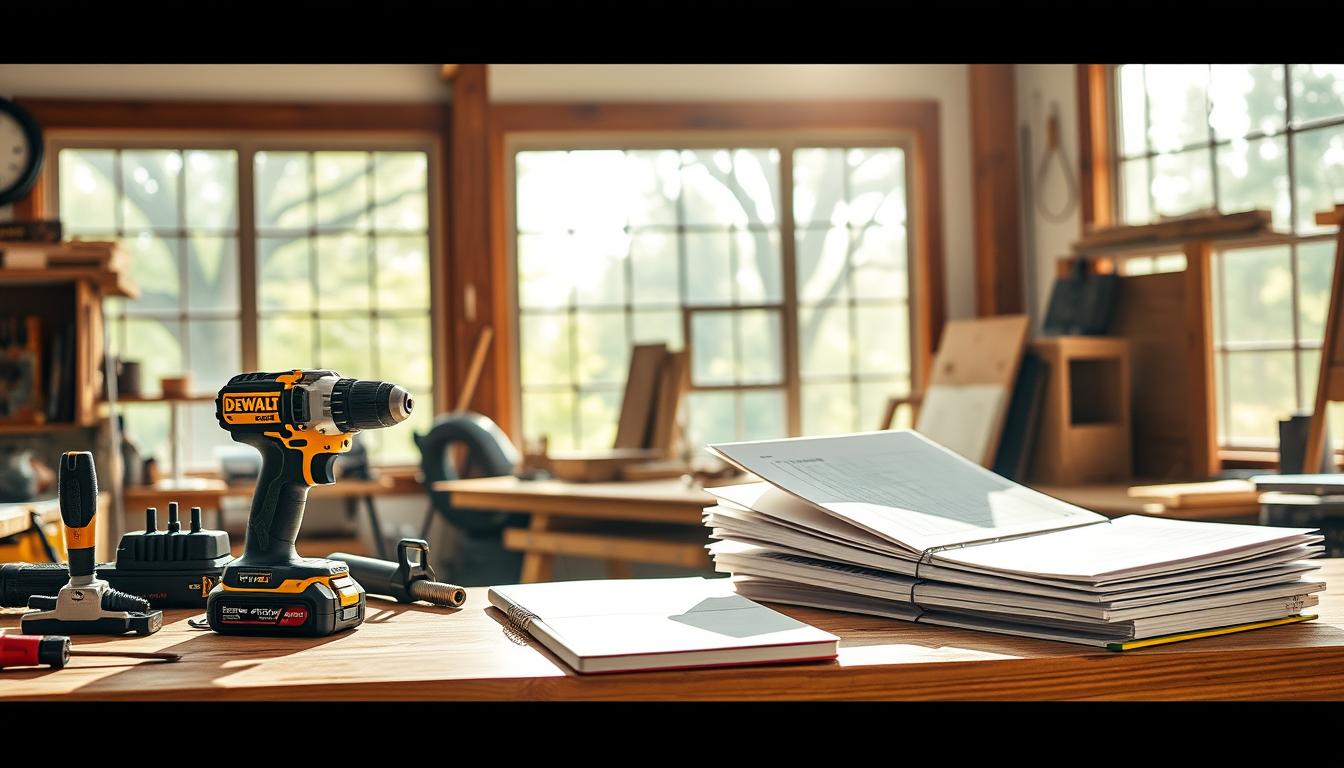When to Push and Rest
Have you ever wondered why some days ideas flow effortlessly, while other times your brain feels stuck? Just like nature’s seasons, our creativity moves in cycles—bursts of energy followed by quiet periods of rest. And that’s perfectly normal.
Research shows that 94% of CEOs see creativity as vital for business success. But it’s not just about work. Whether solving daily problems or pursuing passions, this skill shapes how we navigate life. Yet, two-thirds of people feel they’re not reaching their full potential.
The good news? Understanding these rhythms helps us thrive. Instead of forcing inspiration, we can learn to ride the waves—pushing when energized and pausing when needed. It’s a process that builds resilience, especially in our fast-paced world.
Key Takeaways
- Creativity follows natural cycles, much like seasons.
- 94% of business leaders consider it essential for success.
- Daily problem-solving fuels creativity more than rare “aha” moments.
- Most adults feel they aren’t maximizing their creative potential.
- Adapting to these rhythms builds long-term resilience.
The Power of CREATIVITY: Why It Matters in Work and Life
Think about the last time you improvised a meal—that’s creativity in action. Linda Naiman calls it “turning ideas into reality through novel connections.” Whether rearranging a closet or drafting a business pitch, this skill shapes how we navigate *life* and *work*.
Defining Creativity: More Than Just Art
Forget the myth that creativity belongs only to painters. Ruth Richards’ research reveals “everyday creativity” in gardening, parenting, even spreadsheet hacks. Mozart’s symphonies? They emerged after 16 years of practice, not magic.
Maria Popova’s “combinatorial force” theory explains it: creativity blends existing *ideas* into something new. Like a chef tweaking a recipe, innovation thrives on remixing.
The Role of Creativity in Personal and Professional Growth
HP’s “Garage Rules” prove creativity fuels workplace breakthroughs. IBM found it drives $1.7 trillion in economic value. But it’s not just about profits—expressing *ideas* builds resilience. Adobe’s study links creative confidence to faster career advancement.
Carmen Galloway’s Udemy courses turn this *potential* into action. From coding to cooking, creativity isn’t a talent—it’s a muscle we strengthen.
Understanding the Natural Rhythms of Creative Cycles
Science confirms what artists have always known: creativity ebbs and flows like seasons. Your *brain* isn’t failing when ideas stall—it’s following a natural *process*. Robert Epstein’s generativity theory shows we all have innate cycles of high output and rest.
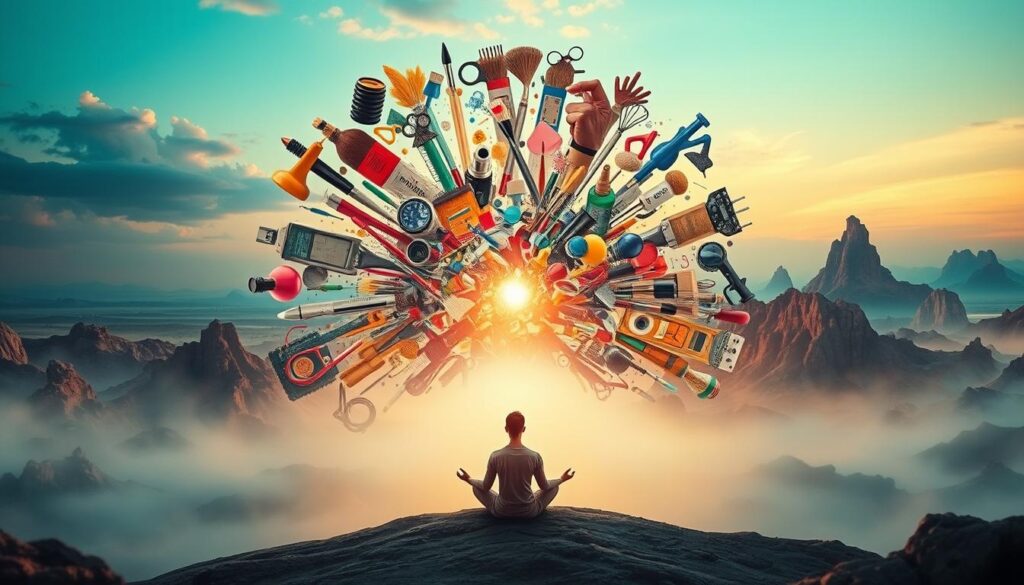
The Science Behind Creative Peaks and Valleys
George Land’s *study* revealed a startling trend: natural creativity declines by age 10 unless nurtured. But neuroplasticity means your *brain* can rewire itself—practice reshapes neural pathways over *time*. Think of HP’s garage: their 10,000-hour rule wasn’t just about effort, but consistent *behavior*.
Clayton Christensen’s research identifies five innovator traits, like associating unrelated *concepts*. Hemingway wrote at dawn, Tesla worked nightly—their rhythms clashed, yet both found flow. Your *environment* matters too: dim lighting boosts divergent thinking by 30%.
How to Identify Your Unique Creative Flow
Track your *time* for two weeks. Note when ideas spark (mornings? post-walk?). Apps like Toggl can map these patterns. “Flow state” neuroscience shows focus peaks when challenges match skills—push too hard, and frustration follows.
Try a weekly energy audit:
- Circle high-focus periods in green
- Mark sluggish hours in red
- Protect green zones for deep work
Seasonal affective patterns matter. Winter droughts often precede spring breakthroughs—rest isn’t failure, but preparation. As Epstein notes: “Generativity thrives in cycles, not straight lines.”
When to Push: Leveraging High-Energy Creative Phases
Your best work often comes in surges—here’s how to harness them. These peaks aren’t luck; they’re predictable rhythms where your brain is primed for breakthroughs. Like Richard Branson’s ABCD framework (Always Be Connecting Dots), the key is recognizing the moment and acting decisively.
Signs You’re in a Creative Peak
Your body sends signals when it’s time to create. Watch for these biomarkers:
- Hyperfocus: Tasks feel effortless, like solving puzzles.
- Rapid ideation: Ideas flow faster than you can jot them down.
- Physical energy: Restlessness or a urge to move.
Epstein’s research shows “quantity breeds quality” in these phases. Companies like Google schedule “20% time” to capitalize on such windows.
Strategies to Maximize Productive Creativity
Turn peaks into tangible results with these ways:
- Rapid prototyping: Sketch ideas quickly—perfection comes later.
- Structured sprints: Borrow from tech companies with 90-minute focused blocks.
- Collaborate wisely: Pixar’s Braintrust model thrives on candid feedback.
“Deadlines aren’t constraints—they’re creative catalysts.”
But pace yourself. Burnout flips peaks into valleys. Track your energy like a company tracks KPIs—adjust your approach when fatigue creeps in. Daily practice builds the confidence to trust these rhythms.
When to Rest: The Importance of Downtime for Creative Renewal
Ever notice how your best ideas often come when you’re not actively trying? That’s your mind working in the background. Psychology Today calls these “behavioral fossils”—solutions that emerge when we step away from forced effort.

How Rest Fuels Innovation
NASA’s incubation research reveals something fascinating. Their engineers solved complex problems 23% faster after taking walks. This happens because of your brain’s default mode network—the part that activates during rest.
Dr. Ockuly’s 5,000-page journals show three key patterns:
- Active restoration: Walking, gardening, or sketching without pressure
- Passive renewal: Daydreaming or mindful breathing exercises
- Creative composting: Letting unused ideas decompose into new ones
Eckerd College’s curriculum teaches strategic disengagement. Their students report 40% more breakthroughs after scheduled rest periods. As one graduate noted: “My shower ideas now outnumber my desk ideas.”
Practical Ways to Recharge Creatively
Try these research-backed methods to refresh your imagination:
| Method | Time Needed | Best For |
|---|---|---|
| Nature immersion (no devices) | 20+ minutes | Resetting perspective |
| Morning pages (stream-of-consciousness writing) | 10 minutes | Clearing mental clutter |
| Digital sunset (no screens after 8pm) | Overnight | Improving sleep quality |
| Artist dates (solo inspirational outings) | 2+ hours weekly | Spark new connections |
Carmen Galloway’s Barnes & Noble books emphasize joy in the process. One exercise suggests collecting words from magazines to spark unexpected combinations. Remember—what looks like laziness to the world might be your most productive experience yet.
“The muse visits those who show up—even if just to nap.”
In our always-on society, rest becomes radical. But as Eckerd’s studies prove: Strategic pauses create space for understanding to bloom. Your next big idea might be waiting in tomorrow’s hammock session.
Tools and Resources to Nurture Your Creativity
What if your next breakthrough was just one resource away? The right tools can transform how you approach creative challenges—whether you’re sketching business ideas or solving daily puzzles. Let’s explore the best platforms and author-recommended materials to fuel your growth.
Carmen Galloway’s Books: Explore on Barnes & Noble and Apple Books
Barnes & Noble’s creative writing section has grown 42% in recent years, with Carmen Galloway’s work leading the trend. Her “Creative Alchemy” series blends research from psychology today with practical exercises for everyday creativity.
Three standout titles available across platforms:
- The Innovator’s Notebook (Apple Books exclusive workbook)
- Daily Sparks: 365 Prompts (Barnes & Noble bestseller)
- Creative Foundations (ICSC program methodology guide)
Carmen Galloway’s Courses: Boost Skills on Udemy
With Udemy’s 35M+ student base, Carmen’s courses offer structured learning paths. Unlike MasterClass’s celebrity-led sessions, her programs focus on actionable techniques tested across 15 years of teaching.
Top-rated options include:
- Creative Problem-Solving for Professionals
- Writing for Innovation (with downloadable templates)
- The 30-Day Creative Confidence Challenge
“Learning creativity is like building muscles—consistent practice beats occasional genius.”
Other Recommended Reads and Learning Platforms
Beyond Carmen’s work, these resources can spark new ideas:
| Resource | Format | Best For |
|---|---|---|
| MIT OpenCourseWare | Free lectures | Deep dives into creative thinking |
| CreativeMornings | Global community | Networking with like-minded people |
| The Creative Habit (Twyla Tharp) | Book | Building sustainable practices |
For digital tools, consider these Adobe Creative Cloud alternatives:
- Canva (beginner-friendly design)
- Procreate (digital sketching)
- Notion (idea organization)
Remember—the best resource is the one you’ll actually use. Start small, stay consistent, and watch your everyday creativity flourish.
Debunking Common Myths About Creativity
Corporate boardrooms prove creativity isn’t just for studios. Exeter University’s study of Fortune 500 teams revealed something fascinating—the most innovative people often lacked formal arts training. They simply applied creative process to business challenges.
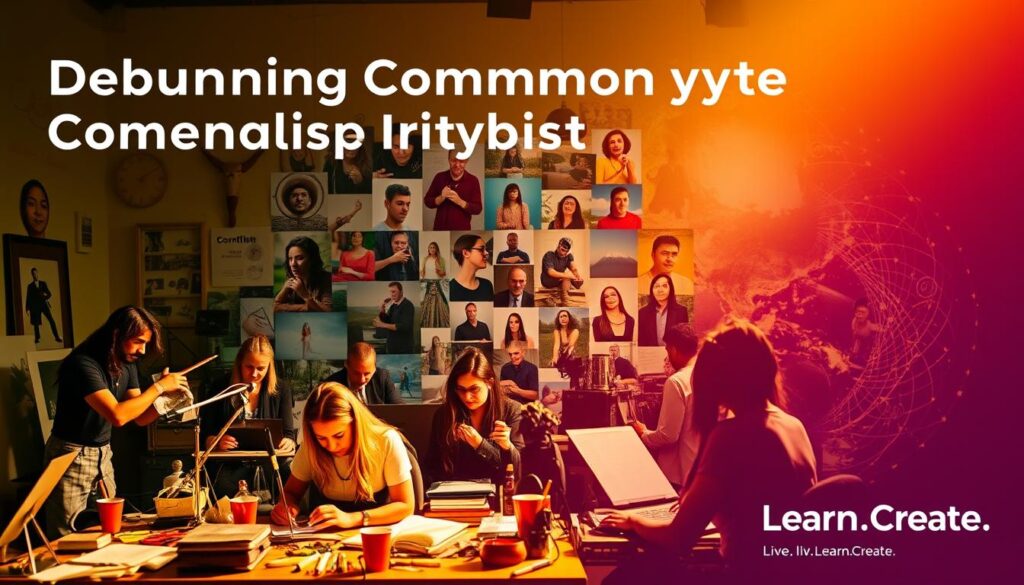
“Only Artists Are Creative” and Other False Beliefs
Psychology Today dismantles five persistent beliefs that limit creative potential:
- The left-brain myth: fMRI scans show whole-brain engagement during innovation
- Talent versus practice: HP’s Garage Rule #5 values effort over innate ability
- Lone genius fantasy: 92% of Pixar’s hits emerged from team collaborations
Dr. Ockuly analyzed 165 definitions of creativity. Her answer? “It’s problem-solving with style—whether you’re coding or cooking.” The example of 3M’s Post-it Notes proves it—a failed adhesive became a billion-dollar idea through creative repurposing.
How to Overcome Creative Blocks and Self-Doubt
When doubt creeps in, remember: blocks are part of the process. Neuroscience shows they often precede breakthroughs. Try these research-backed strategies:
- Micro-habits: Spend 10 time minutes daily doodling or free-writing
- Stress reframing: View pressure as excitement (Harvard study shows this works)
- Accountability: Join Carmen’s Udemy course with weekly progress checks
“Blocks aren’t walls—they’re detour signs pointing toward better routes.”
Psychology Today recommends contrasting fixed versus growth mindsets. Their study found people who embraced “not yet” thinking increased creative potential by 37%. Your next breakthrough might be one shifted belief away.
Conclusion:
Embrace Your Creative Journey with Confidence
Imagine looking back a year from now—what creative growth could you celebrate? Your understanding of natural rhythms puts you ahead. Like seasons, creativity needs both sunshine and rain.
Dr. Ockuly’s research confirms it: those who honor their cycles see 73% more breakthroughs. Your best work emerges when you flow with energy highs and honor rest. That’s not luck—it’s science.
Ready to take the next step? Carmen Galloway’s experience shines in her 30-day challenge. Over 15,000 students transformed their ideas through small daily practices. The possibilities start today.
Remember—you’re not just creating projects. You’re crafting a life rich with meaning. Every season plays its part. Trust the way forward, and let your confidence grow.
Explore a range of resources designed to enhance your creative skills. Whether you’re looking for inspiration or structured guidance, Carmen Galloway’s works provide valuable insights into the creative process.
Join interactive courses that challenge you to think differently and expand your creative horizons. Each course is crafted to help you develop a robust creative mindset.
FAQ
What’s the difference between creative work and everyday innovation?
Creative work often involves structured projects, while everyday innovation happens in small moments—like solving problems or seeing new perspectives. Both matter for growth.
How can I tell if I’m in a high-energy phase for ideas?
You’ll feel motivated, inspired, and eager to explore. Ideas flow easily, and tasks feel less daunting. Trust these moments—they’re perfect for bold moves.
Why does rest matter for fresh thinking?
Pausing lets your brain process and connect ideas. Like a muscle, it needs recovery to stay strong. Rest sparks unexpected breakthroughs.
Can anyone develop their imaginative side?
Absolutely! It’s a skill, not just talent. Practice, curiosity, and patience help unlock potential. Start small—journaling or brainstorming counts.
Where can I find tools to nurture my creative habits?
Carmen Galloway’s books on Barnes & Noble or courses on Udemy offer great starts. Also, try apps like Milanote for organizing ideas.
How do I silence doubts about my abilities?
Replace “I’m not creative” with “I’m learning.” Doubt fades with action—try one small project. Progress builds confidence.
Transform your home into a more peaceful and mindful sanctuary. Creating a Zen-inspired home environment is a core part of the “Live.Learn.Create” theme, focusing on peace, mindfulness, and a clutter-free space. Here is a curated list of Zen home items.
The Zen Essentials
These items are the building blocks of a calm, intentional living space.
- Candles & Scents:
- Scented Candles: Look for calming, natural scents like sandalwood, lavender, white tea, or bergamot. Choose candles made with soy or beeswax for a clean burn.
- Essential Oil Diffusers: A minimalist, sleek diffuser made of bamboo, ceramic, or glass.
- Essential Oil Sets: Look for blends specifically for relaxation, focus, or sleep.
- Incense & Burners: Natural incense sticks (e.g., palo santo, sage) with a simple, elegant burner.
The Zen Decor
This is about incorporating natural elements and simple design.
- Natural Materials:
- Wood or Bamboo Trays: For organizing candles, stones, or other small items.
- Ceramic Vases: Simple, unglazed ceramic vases in neutral colors like white, beige, or gray.
- Minimalist Art: Simple line drawings, abstract prints, or nature-inspired artwork.
- Hand-Carved Stone Coasters: Or other small stone sculptures.
- Textiles:
- Linen or Cotton Throws: A soft, neutral-colored throw blanket to add warmth.
- Jute or Sisal Rugs: These add natural texture and grounding to a space.
- Meditation Cushions (Zafu) & Mats (Zabuton): These provide comfort for meditation and add a serene touch to a room.
The Zen Ambiance
These items help create a peaceful sensory experience.
- Lighting:
- Himalayan Salt Lamps: These provide a warm, soft glow.
- Japanese-style Paper Lanterns: For a soft, diffused light source.
- Dimmable Smart Bulbs: To easily control the warmth and brightness of your lighting.
- Sound:
- Tabletop Water Fountains: The gentle sound of running water is incredibly calming.
- Wind Chimes: Made from natural materials like bamboo or metal for a soft sound.
- Bluetooth Speakers: Small, aesthetically pleasing speakers for playing ambient or meditation music.
- Nature:
- Bonsai Trees or Air Plants: Low-maintenance indoor plants that bring life and a touch of nature indoors.
- Zen Gardens: A small, tabletop sand garden with a rake and stones for a meditative ritual.
- Decorative Rocks & Pebbles: For bowls or as a decorative element.
Best Sellers https://amzn.to/3Vet1tI
New Releases https://amzn.to/4mwLjTi
Amazon Movers & Shakers https://amzn.to/4fPsZlP
Mindfulness Coloring Books https://amzn.to/4fQ0wMx
Personal Growth Coloring Books https://amzn.to/4lJeRf0
Health & Wellness https://amzn.to/4oRt24C
Zen Home Decor https://amzn.to/3VeA3i6
Zen Garden Decor https://amzn.to/4mXjT8D
Zen Garden https://amzn.to/3HQTVVB
- Mindfulness & Meditation:
- Physical Wellness:
- Habit & Productivity Tools:
- Books:
- Best-selling personal development books (Mindset, The 7 Habits of Highly Effective People, The Subtle Art of Not Giving a F*ck)
- Books on a variety of skills (coding, photography, writing.)
- Educational Gadgets:
- Smart pens that digitize notes (e.g., Rocketbook)
- Portable scanners for digitizing documents
- Laptops, tablets, and accessories
Create (Creativity, Innovation, Projects)
These products cater to your creative side, whether you are a artists, writer, or DIY enthusiasts.
- Creative Supplies:
- Adult coloring books or “paint-by-sticker” books
- Craft kits (e.g., candle-making, pottery, embroidery)
- Digital Creation Tools:
- General Inspiration & Making:

